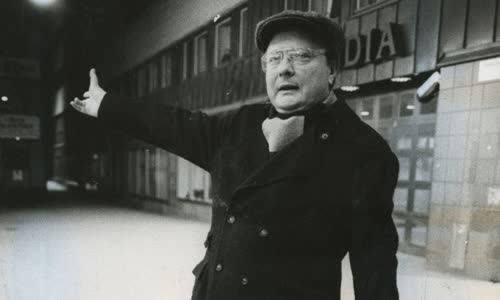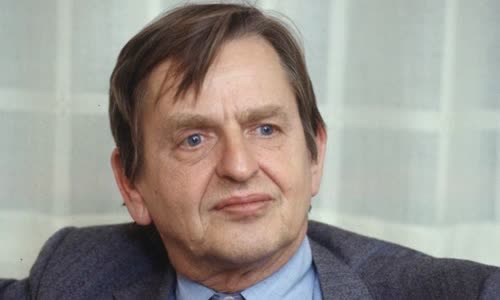Stig Engstrom, the suspected assassin of Prime Minister Palme, provided a description of the "culprit" to the Swedish police, which left the case deadlocked for 34 years.
On the evening of February 28, 1986, after watching a comedy at the Grand Cinema in the center of the capital, Swedish Prime Minister Olof Palme and his wife Lisbeth walked towards the subway station to go home.

Stig Engstrom stood outside Skandia's office in Stockholm in April 1986 Photo: AFP
34 years later, on June 10, prosecutor Krister Petersson concluded that there was reasonable evidence that the main suspect assassinating Prime Minister Palme was Stig Engstrom, a graphic designer at insurance company Skandia located far from the scene.
Engstrom was 52 years old at the time of the murder and committed suicide in 2000 at the age of 66. Because he could not be prosecuted because he died, Sweden decided to close the case.
Engstrom had Swedish parents, born in India before the family returned to Sweden when he was 12 years old.
In the 1980s, Engstrom participated in local politics, representing the right-wing Moderate party.
Engstrom was originally a witness to the case and was questioned by police several times.
The graphic designer told the police that he wore a dark knee-length coat, a baseball cap, glasses and a small bag around his wrist.
Engstrom himself also "ignited" when he told the police that he believed himself to be the man the other witnesses described because they mistook him for the killer when he ran after the police in search of the killer.
Engstrom said that he found the perpetrator was wearing a blue cotton coat and Lisbet gave the same description.
Moreover, none of the other witnesses saw Engstrom acting as he had told him: Engstrom said he was one of the first on the scene, helped to rescue Palme and show the police the direction of the killer.
"When we reviewed the file, it was strange that no witnesses realized that Stig Engstrom was present at the scene," prosecutor Peterson said.
The police in the 1980s initially considered putting Engstrom on suspicion, but later considered him "an unreliable witness", "who wanted to attract attention" and "was not suspected of being involved in the case."
However, prosecutor Petersson said Engstrom's actions and testimony after the assassination made him even more suspicious.

The late Swedish Prime Minister Olof Palme in 1984 Photo: Reuters
One day after the murder, Engstrom asked the company for information about the time he left the office, saying he needed them to share with the police and the media, even though he had not yet provided any information.
Engstrom even appeared on several TV shows and articles about the murder, criticizing the police for not taking his testimonies seriously.
Police have not recovered weapons that were used to assassinate Palme.
But police discovered that Engstrom had similar access to the same type of gun.
"Engstrom's relatives and acquaintances described him as having a very negative view of Olof Palme and the Prime Minister's political views. We also learned that he had financial problems and had to go to prison.
The Engstrom hypothesis was the first assassin mentioned in a Lars Larsson report in 2016. Journalist Thomas Pettersson made the same claim in Filter magazine in 2018, after 12 years of investigating the case.
Petersson said officials took too long to draw conclusions because the original investigation was conducted differently today.
Since 2017, the police have been focusing on documents related to the crime scene and suspicious individuals, unlike previous tactics focusing on identifying clearly motivated groups that could not be found.
Petersson said investigators believed that Engstrom acted alone, but "it is impossible to completely reject the hypothesis he was part of a group conspiracy."
Closing the case by identifying suspects based on indirect evidence and inference could be an inadequate conclusion for one of the world's biggest political mysteries.
"Even if we continue to investigate for many years, we will still see Stig Engstrom as the suspect," the prosecutor added.



 Florentina Luchian
Florentina Luchian







